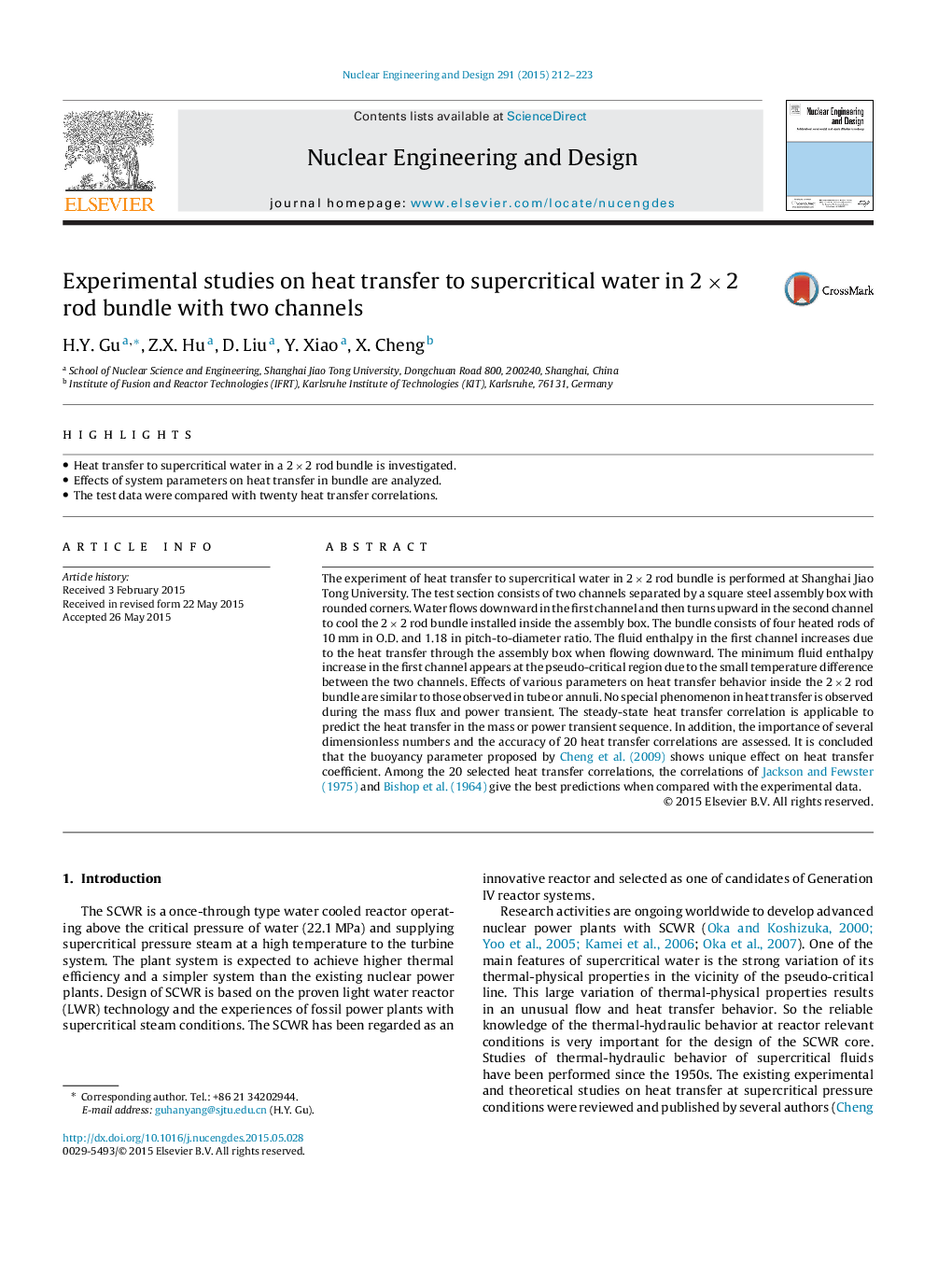| Article ID | Journal | Published Year | Pages | File Type |
|---|---|---|---|---|
| 296109 | Nuclear Engineering and Design | 2015 | 12 Pages |
•Heat transfer to supercritical water in a 2 × 2 rod bundle is investigated.•Effects of system parameters on heat transfer in bundle are analyzed.•The test data were compared with twenty heat transfer correlations.
The experiment of heat transfer to supercritical water in 2 × 2 rod bundle is performed at Shanghai Jiao Tong University. The test section consists of two channels separated by a square steel assembly box with rounded corners. Water flows downward in the first channel and then turns upward in the second channel to cool the 2 × 2 rod bundle installed inside the assembly box. The bundle consists of four heated rods of 10 mm in O.D. and 1.18 in pitch-to-diameter ratio. The fluid enthalpy in the first channel increases due to the heat transfer through the assembly box when flowing downward. The minimum fluid enthalpy increase in the first channel appears at the pseudo-critical region due to the small temperature difference between the two channels. Effects of various parameters on heat transfer behavior inside the 2 × 2 rod bundle are similar to those observed in tube or annuli. No special phenomenon in heat transfer is observed during the mass flux and power transient. The steady-state heat transfer correlation is applicable to predict the heat transfer in the mass or power transient sequence. In addition, the importance of several dimensionless numbers and the accuracy of 20 heat transfer correlations are assessed. It is concluded that the buoyancy parameter proposed by Cheng et al. (2009) shows unique effect on heat transfer coefficient. Among the 20 selected heat transfer correlations, the correlations of Jackson and Fewster (1975) and Bishop et al. (1964) give the best predictions when compared with the experimental data.
